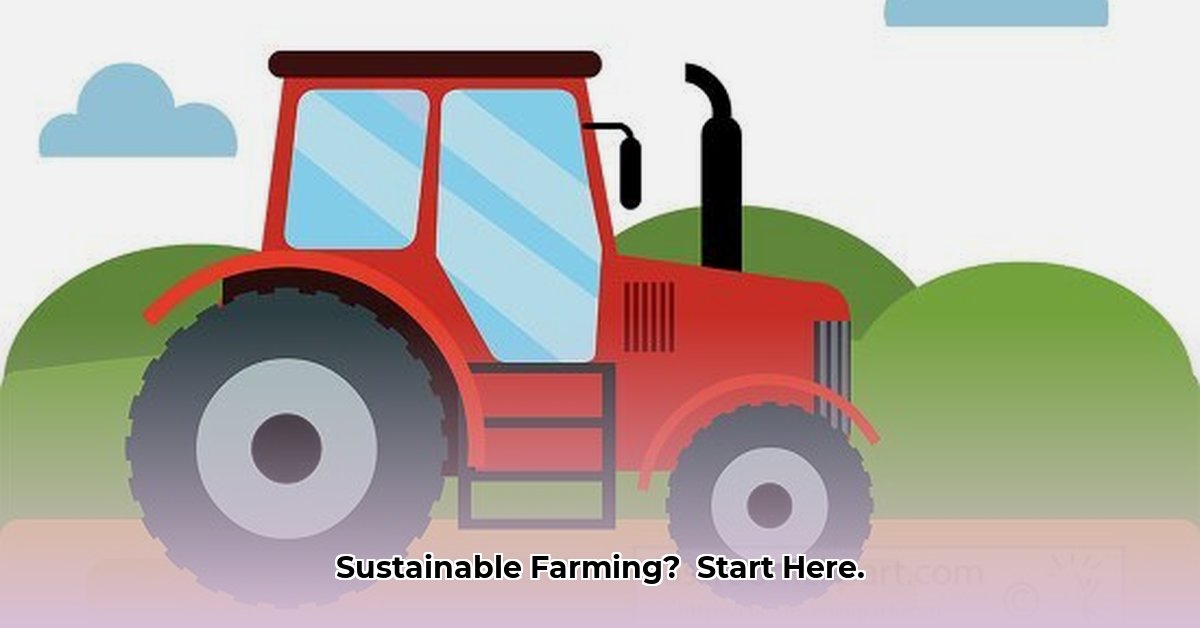
Clipart and Beyond: The Digital Transformation of Sustainable Agriculture
That simple image—a clipart of a tractor—symbolizes a profound shift in how we approach food production. Digital resources, from basic images to sophisticated software, are revolutionizing sustainable agriculture, presenting both exciting opportunities and significant challenges. This article explores this transformative landscape, offering actionable steps for various stakeholders to harness technology for a more sustainable future. Can digital tools truly bridge the gap between technological advancement and the needs of all farmers? Let’s find out. For more tractor clipart, check out this great resource.
Opportunities: The Power of Digital Resources in Sustainable Farming
Digital tools offer a wealth of potential benefits, significantly impacting the efficiency and sustainability of agricultural practices. The accessibility of information alone has far-reaching implications. A farmer facing a crop disease in a remote region can now utilize a smartphone and internet connection to access detailed information, tutorials, and even expert advice, all within moments. This immediate access to knowledge levels the playing field, empowering farmers globally. Moreover, visual aids—like diagrams or even simple clipart—can effectively communicate complex techniques, bridging communication gaps regardless of literacy levels.
Precision agriculture is another game-changer. Data collected by GPS-equipped tractors and sensors provides insights into soil conditions, moisture levels, and plant health, enabling farmers to optimize resource utilization. This data-driven approach allows for precise application of water and fertilizers, minimizing waste and reducing environmental impact. Isn't optimizing resource use precisely what sustainable agriculture is all about? A significant reduction in fertilizer and water usage translates to substantial cost savings and environmental benefits, underscoring the economic and ecological advantages of this technology.
Furthermore, online platforms create dynamic learning environments, fostering collaboration and knowledge-sharing. Farmers can engage in online courses, connect with peers, and tap into the collective wisdom of agronomists and researchers. This collaborative approach empowers farmers to adapt to evolving conditions and improve their practices. The potential for innovation and sustainable growth within this interconnected ecosystem is immense.
Challenges: Addressing the Digital Divide and Ethical Concerns
Despite the potential, significant roadblocks hinder the widespread adoption of digital resources in agriculture. The digital divide remains a considerable challenge, particularly in developing countries. Many farmers lack access to reliable internet connectivity, affordable devices, and the necessary digital literacy skills. This unequal access perpetuates existing inequalities, creating a disparity between larger farms and smallholder operations. How can we ensure equitable access to these transformative tools? It's a question that requires immediate attention.
Data privacy is also a major concern. Smart farming technologies collect vast amounts of data, raising critical questions about ownership, security, and ethical use. Protecting farmers’ data from misuse or unauthorized access is paramount. Robust security measures and clear regulations are essential to ensure responsible data handling and maintain farmer trust.
Actionable Recommendations: A Collaborative Approach to Digital Farming
Unlocking the full potential of digital agriculture requires a collaborative effort involving various stakeholders. A multi-pronged approach is needed to overcome the challenges and capitalize on the opportunities.
1. Bridging the Digital Divide:
- Government Investment: Governments should prioritize expanding rural broadband infrastructure, ensuring reliable internet access for all farming communities. This investment is a critical first step towards leveling the playing field and allowing all farmers to benefit equally from these advancements.
- NGO Partnerships: Nonprofit organizations can play a vital role in providing tailored digital literacy training programs. These programs should focus on practical applications, making technology user-friendly and accessible for diverse farming communities.
2. Empowering Farmers with Accessible Technology:
- User-Friendly App Development: Developers should focus on creating intuitive, user-friendly apps with minimal data requirements, prioritizing ease of use and functionality over complex features. Keeping things simple enhances accessibility and encourages adoption.
- Open-Source Resources: Sharing educational materials like visually appealing guides and videos (including examples like clipart of tractors!) promotes knowledge sharing and empowers farmers to assist each other. Making these resources available in multiple languages increases accessibility and fosters inclusivity.
3. Ensuring Responsible Data Practices:
- Ethical Data Handling by Developers: Technology developers must prioritize data security and ethical considerations in their designs. Transparency regarding data usage is crucial to build farmer trust and ensure responsible data handling.
- Robust Regulation and Governance: Clear regulations governing data ownership, security, and use are vital. These regulations should safeguard farmers' rights and ensure responsible data management across the board.
4. Building Strategic Partnerships:
- Integrated Education and Training: Agricultural colleges and universities must integrate digital agriculture into their curricula, preparing future generations of farmers for the digital age.
- Collaborative Ecosystem: Open communication and collaboration among farmers, NGOs, technology companies, and government agencies are essential for developing sustainable and equitable solutions. Success depends on this interconnected ecosystem of innovation and collaboration.
Conclusion: A Sustainable Future Through Collaborative Innovation
The integration of digital resources in sustainable agriculture is not about replacing traditional farming practices but enhancing them. The most effective approach combines modern technology with the experience and knowledge of generations of farmers. By addressing the challenges and capitalizing on the opportunities, we can create a more sustainable and equitable food system for all. The journey towards this future requires a collaborative, innovative spirit, recognizing that both technological advancements and traditional wisdom are valuable assets in building a better tomorrow.